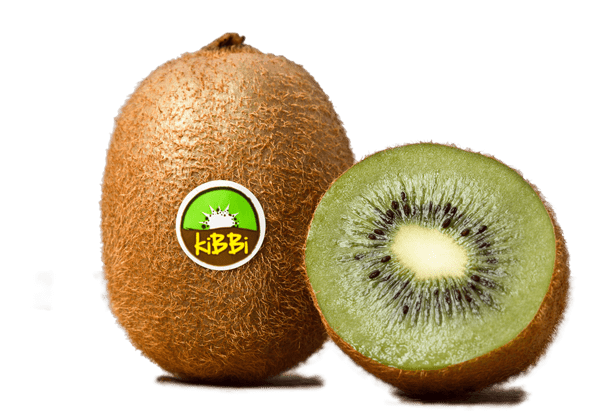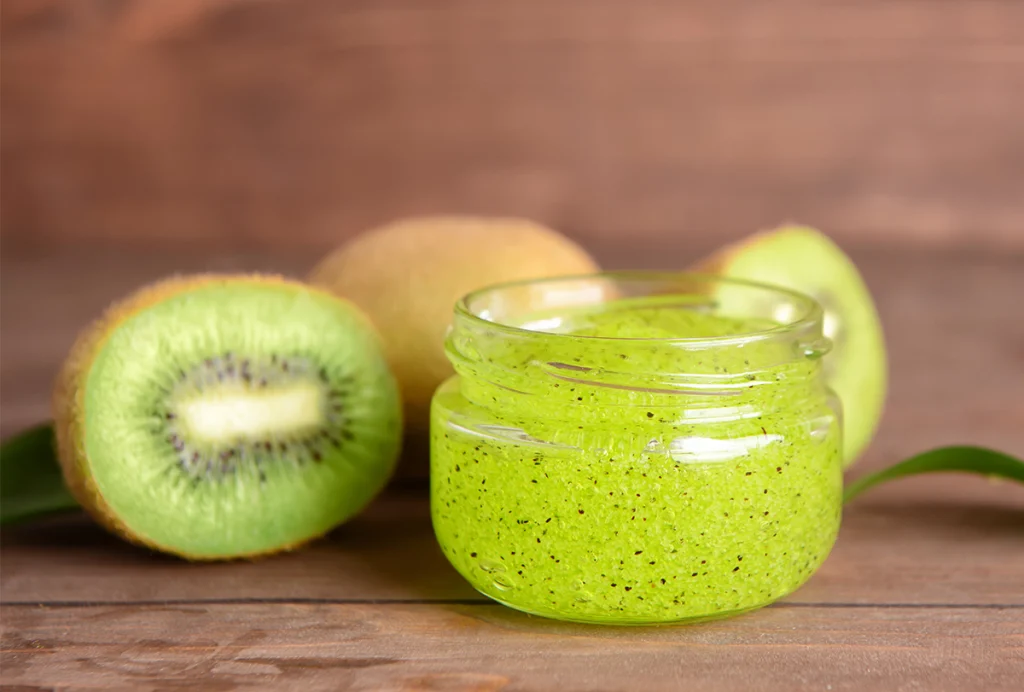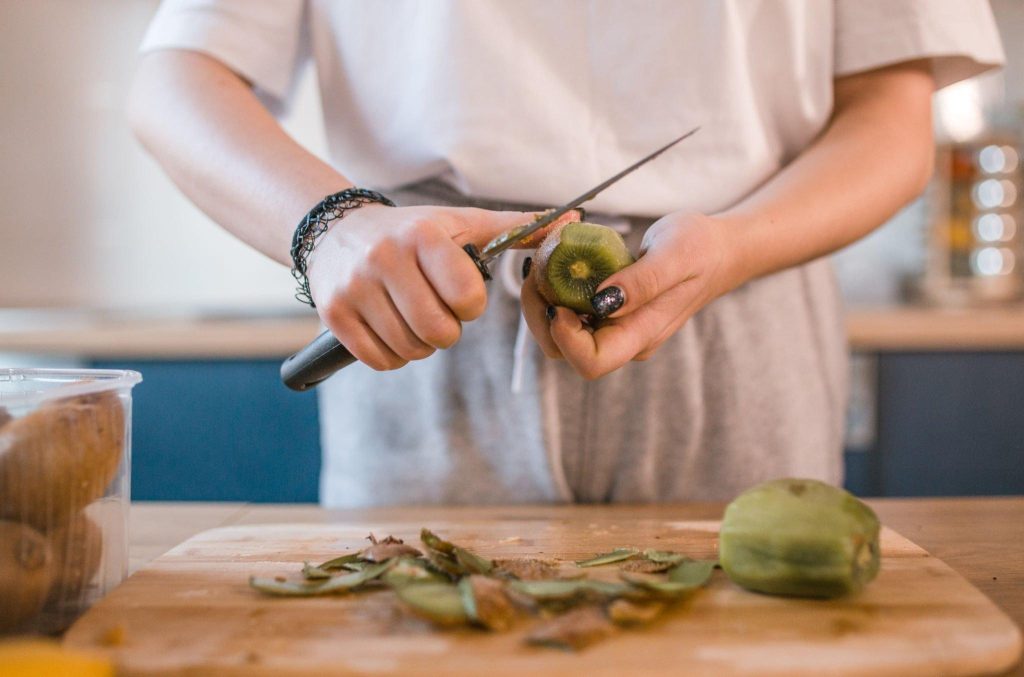At Kibbi, we cultivate the HAYWARD variety organically, which is the most well-known among green kiwis. We produce approximately 250,000 kilograms per year, which we sell from December to May
Kiwi is a deciduous climbing shrub native to the mountains of China, belonging to the Actinidiaceae family, Actinidia genus, and deliciosa species. It begins its development in March, blooms and forms fruit in late May, and after slow growth during the summer and autumn months, reaches its optimal harvesting time in November.
During the months of December and January, pruning is carried out on the branches that bore fruit in the previous season. This practice is essential to renew and stimulate the growth of new branches, ensuring greater production in the upcoming season. After finishing the pruning, the remains are mulched right there so that the organic matter returns to the soil.
After shredding the pruning remains, in February and March, the remaining branches are tied up. This process involves securing the branches to wires or support structures to achieve good separation between them, ensuring proper fruit illumination. This allows the fruits to attain an adequate size and higher quality.
As spring approaches, buds begin to appear on the branches. This phenomenon is known as bud break. The number of flower buds that develop at this stage provides an initial estimate of the amount of fruit expected to be harvested during the season.
Kiwi plantations primarily consist of female trees, which bear fruit, but male trees are also necessary for pollination. In the month of May, both male and female trees blossom simultaneously. Thanks to the valuable work of bees and insects that, while feeding on nectar and pollen, carry the male flower’s pollen to the female flower with their bodies, pollination occurs. Following this process, fruit formation takes place.
Once the fruits begin to develop, manual thinning is carried out. This practice involves selectively removing fruits that have defects or are overloading the productive branch. The goal is to allow the remaining fruits to have enough space and resources to grow optimally, resulting in better quality and size
During this stage, special attention is paid to the proper development and growth of the fruits. Orchard management techniques are implemented, such as proper ventilation to prevent diseases and optimal irrigation planning to ensure that the fruits receive the right amount of water and nutrients
In the month of November, when the kiwis have reached their optimal degree of ripeness, the harvest takes place. Farmers carefully select the ripe kiwis and harvest them manually to preserve their integrity and quality. At this moment, the kiwis have a perfect balance of sugar and a high concentration of dry matter, ensuring a sweet and refreshing taste.
Now you have the opportunity to enjoy the freshness and flavor of our kiwis with just a few clicks!

Explore KiwiTips, your source for tips, information, and trivia about this incredible fruit.


